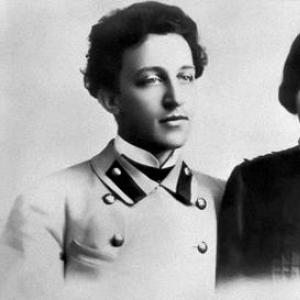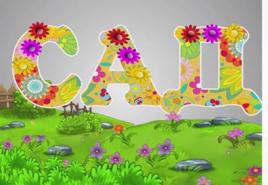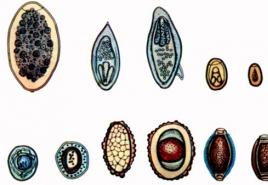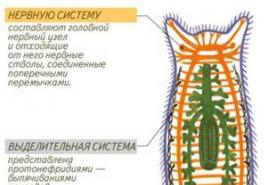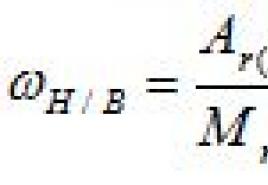A lesson in mathematics on the topic "the representation of decimal fractions on the coordinate ray". Mixed numbers
Lesson plan
Ordinary fractionsdate
Kapezova A.A.
Class: 5
Participated: all
Did not participate: 0
Lesson topic:
Representation of ordinary fractions and mixed numbers on the coordinate ray
Learning Objectives Achieved in This Lesson (Curriculum Link)
5.5. 2 .3
draw on the coordinate raycommone fractions, mixed numbers;
The purpose of the lesson:
Build a coordinate ray and choose the optimal unit segment;
Draw ordinary fractions on the coordinate ray.
Evaluation criteria
Draws ordinary fractions on a coordinate ray.
Builds a coordinate ray and selects a unit segment;
Language tasks
part, ray, unit segment, right fraction, irregular fraction
Educating values
M әngilik el: Society of Universal Labor.
Interdisciplinary communication
Artistic work. economy
Previous knowledge
Know the concept of a ray;
Can build a coordinate ray, select a single segment;
Natural numbers can be marked on the coordinate ray;
During the classes:
Lesson startOrganizing time.
To create a psychological atmosphere conducts a game "I like you"
Children take each other's hands and smile, name the good qualities of their classmates.
Grouping
"Magic bag"
Students take candy out of the bag and sit in groups according to the color of the candy.
Knowledge update.
Exercise 1.
Oral work.
Work in pairs.
What are the names of the elements of the fraction above the line, below the line?
What action can be used to replace the slash?
Which part of the shape is painted over?
Determine which part of the shape is shaded with gray. Give several answers.

The students work in pairs then discuss in the group and check with the teacher.
Descriptors:
Names the elements of a fraction
Understands what the denominator and numerator of a fraction is showing;
Knows the basic property of a fraction
Feedback: student - student, student - teacher.
Candy
Handout
Cards
Answers shown by teacher (interactive whiteboard)
interactive whiteboard
Middle lesson
Exit on the topic:
Guys, you already know how natural numbers are depicted on the coordinate line.
Is it possible to depict ordinary fractions on a coordinate line? (Student response)
The teacher announces the topic of the lesson “Representation of ordinary fractions on the coordinate ray ».
Distributes ready-made material, where students in a group study it.
Definition. The number corresponding to the point of the coordinate ray is called the coordinate of this point.
To depict a correct fraction on the coordinate ray you need:
Divide a single segment into an equal number of parts corresponding to the number in the denominator.
From the origin, postpone the number of equal parts corresponding to the number in the numerator of the fraction.
Sample: To depict a fraction on the coordinate ray, you need to divide a single segment into 9 equal parts and count 5 such parts.
ABOUT A
0 1 x
Assignment 2 ... "Test yourself"
Mark a blinking point on the reference line.
- Find the coordinates of the points

Descriptors:
Understands what the denominator of a fraction means;
Understands what the numerator of a fraction means;
Marks the corresponding point on the coordinate line;
Writes down its coordinate.
Feedback: "Traffic light"
Students show cards depending on the correct answer:
Green color - agree, right;
Yellow - I doubt there is a question;
Red - disagree, wrong
Physical minutes:
One - bend, unbend
Two - bend over, turn around
Three in lodos, three claps
Head three nods
Four arms wider
Five, six - sit quietly
Let's discard seven eight laziness.
Assignment 3
Jikso method.
Draw points A () on the coordinate ray; IN(); FROM().
Draw a coordinate ray, take a 1cm length as a unit segment. mark on it:
Point A (6). Set aside the segments equal to 2 unit segments to the right and to the left of it. Write down the coordinates of the obtained points.
Draw the coordinate ray, take 20 cells of the notebook as a unit segment. Mark points on it with coordinates:;. Which numbers are represented by the same point.
Descriptors:
Knows how to build a coordinate ray
Knows how to select a unit segment;
Can record the coordinates of the received points
Performs fractional reduction
Finds equal fractions.
Students grade a solution using an answer sheet
Feedback:
Green is true
Yellow - needs to be improved (there are errors)
Red is not true
Interactive board.
Aktivstudio
Answer sheet
Stickers (green, yellow, red)
End of the lesson
Reflection of activities in the lesson
In the lesson, I worked actively / passively
I am satisfied / dissatisfied with my work
The lesson seemed short / long to me
I'm not tired / tired during the lesson
My mood got better / worse
The material of the lesson was clear / incomprehensible to me
Useful / useless
Interesting / uninteresting
I know …….
I can…….
I need to learn….
Homework.
differentiated tasks (students themselves choose tasks from the level of difficulty).
Cards
With differential
assigned tasks
Differentiation - in what way would you like to provide more support? What assignments do you give students who are more capable than others?Cards with differentiated tasks
Assessment - how do you plan to check the students' level of assimilation?
F.O. Mutual assessment, self-assessment
"Thumb up or down", physical minutes, traffic light,
Health protection and technical compliance
security
Physics, safety rules when working with an interactive whiteboard
For a convenient representation of the fraction on the coordinate ray, it is important to choose the correct length of the unit segment.
The most convenient way to mark the fraction on the coordinate ray is to take a unit segment from as many cells as the denominator of the fraction. For example, if you want to depict fractions with a denominator of 5 on the coordinate ray, it is better to take a unit segment 5 cells long:
![]()

In this case, the image of fractions on the coordinate ray will not cause difficulties: 1/5 - one cell, 2/5 - two, 3/5 - three, 4/5 - four.
If you want to mark fractions with different denominators on the coordinate ray, it is desirable that the number of cells in a unit segment be divided by all denominators. For example, to represent fractions with denominators 8, 4, and 2 on the coordinate ray, it is convenient to take a unit segment eight cells long. To mark the desired fraction on the coordinate ray, divide the unit segment into as many parts as the denominator, and take as many parts as the numerator. To represent the fraction 1/8, we divide the unit segment into 8 parts and take 7 of them. To depict the mixed number 2 3/4, we count two whole unit segments from the origin, and divide the third into 4 parts and take three of them:
![]()

Another example: a coordinate ray with fractions, the denominators of which are 6, 2, and 3. In this case, it is convenient to take a segment with a length of six cells as a unit:

Date: 13 /02/2017 ___________
Class: 5
Subject: mathematics
Lesson no. : 129
Lesson topic: “ Image of decimal fractions on the coordinate ray.».
Goals and objectives of the lesson:
Educational:
To form the ability to represent decimal fractions by points on the coordinate ray, to find the coordinates of the points shown on the coordinate ray;
Developing:
– continue work on the development of: 1) the ability to observe, analyze, compare, prove, draw conclusions; 2) mathematical and general outlook; 3) evaluate their work;
Educational:
– to form the ability to express their thoughts, listen to others, conduct dialogues, defend their point of view; develop self-esteem skills.
During the classes
I. Organizational moment , greetings, wishes for fruitful work.
Check if you have everything ready for the lesson.
II. Setting the goals of the lesson.
Guys look closely at the topic of today's lesson. What do you think we will be doing in the lesson today? Let's try with you to formulate the objectives of the lesson.
III. Knowledge update. All students write in notebooks, one student behind a closed board. The teacher checks the work on the board and then all students compare and correct mistakes.
1) Mathematical dictation.
1. Three point one tenth.
2. Five point eight.
3. One point five.
4. Zero point seventy.
5. Seven point twenty five hundredths.
6. Zero point sixteen hundredths.
7. Three point one hundred twenty five thousandths.
8. Five point twelve hundredths.
9. Ten point twenty four hundredths.
10. One point three tenths.
Answers:
1. 3,1
2. 5,8
3. 1,5
4. 0,75
5. 7,25
6. 0,16
7. 3,125
8. 5,12
9. 10,24
10. 1,3
2) Oral work
(1) Read the decimals:
3) Let's remember!
To mark a point on the coordinate ray, you need ...
What letter marks the point on the coordinate ray?
How is the coordinate of a point recorded?
3. Learning new material.
Decimal fractions on the coordinate ray are depicted in the same way as ordinary fractions.
(2) 1)
The number 3.2 contains 3 whole units and 2 tenths of one. First, mark on the coordinate ray the point corresponding to the number 3. Then divide the next unit segment into ten equal parts and count two such parts to the right of the number 3. So we get the point A on the coordinate ray, which represents the decimal fraction 3.2. The distance from the origin to point A is 3.2 unit segments (A \u003d 3.2).
Let's represent the decimal fraction 3.2 on the coordinate ray.
2) Let's represent the decimal fraction 0.56 on the coordinate ray.
4. Consolidation of the studied material.
(3) 1. The road from Karatau to Koktal is 10 km. Petya walked 3 km. How much of the road did he go?


1. How many equal parts is the entire path divided into? ( 10 pieces )
2. What is one part of the path equal to? (1/10 or 0.1)?
3. What are the three parts of this path equal to? (0.3)?
1. What numbers are marked by points on the coordinate line.
(4) 2.
A (0.3); B (0.9); C (1.1); D (1.7).
A (6.4); B (6.7); C (7.2); D (7.5); E (8.1).
A (0.02); B (0.05); C (0.14); D (0.17).
(5) 3.
E(6) 4. Draw the positioning ray. Take 5 cells of the notebook for a single segment. Find on the coordinate ray points A (0.9), B (1.2), C (3.0)
![]()
(7) Working with the tutorial

(8) 5. Physical education, exercise for attention.

Differentiated work with students (work with gifted and poorly performing students).
6. Summing up the lesson.
Guys, what new did you learn in the lesson today?
Do you think we managed to achieve our goals?
Reflection.
Do you guys think we have achieved our goal?
What did you learn in the lesson? - What did you learn in the lesson?
What did you like in the lesson? What difficulties have you encountered?
(9) 7. Homework :
Reference sheet for the lesson " Displaying decimals on the coordinate ray ».
1. Read the decimals:
0,2 1,009 3,26 8,1 607,8 0,2345 0,001 3,07 27,27 0,24 100,001 3,08 3,89 71,007 5,0023
2. Let's represent the decimal fraction 3.2 on the coordinate ray.
a) The number 3.2 contains 3 whole units and 2 tenths of a unit.
b)Let's represent the decimal fraction 0.56 on the coordinate ray.
3. The road from Karatau to Koktal is 10 km. Petya walked 3 km. How much of the road did he go?


1. How many equal parts is the entire path divided into?
2. What is one part of the path equal to?
3. What are the three parts of this path equal to?
4. Which numbers are marked with dots on the coordinate line.

5. Some points are marked with letters on the coordinate line. Which of the points corresponds to the number 34.8; 34.2; 34.6; 35.4; 35.8; 35.6?
6. Draw a coordinate ray. Take 5 cells of the notebook for a single segment. Find on the coordinate ray points A (0.9), B (1.2), C (3.0)
7. Working with the tutorial : open in the textbook on page 89, we execute the number: № 1254 (task for ingenuity).
8. Count the shapes like this: "First triangle, first corner, first circle, second corner, etc."
9. Homework :
1. task number on the board
2. Think of a fairy tale that should start like this: In a certain kingdom, in a certain state, which was called the "State of Numbers", there were fractions: ordinary and decimal
Sections: Mathematics , Competition "Presentation for the lesson"
Class: 5
Lesson presentation
Back forward
Attention! The slide preview is used for informational purposes only and may not represent all the presentation options. If you are interested in this work, please download the full version.
goal: to form the ability to write and read fractions, to represent them by points on a coordinate line.
Lesson type: lesson of familiarization with new material.
Equipment: computer, projector.
Didactic support of the lesson: Power Point presentation, printed workbooks (RT).
During the classes
I. Organizational moment.
Reporting the topic and setting the goals of the lesson. (Slide 2)
The teacher also informs that “Smart Owl” will help in the lesson.
II. Oral work. (Slides 3-6)
1. Write down what part of all the figures are: a) any one figure, b) circles, c) squares, d) triangles?
2. What part of the figure is painted over?
3. Determine which part of the shape is shaded with gray. Try to give multiple answers.
4. Read the fractions.
III. Mathematical dictation. (Slides 7-9)
The teacher speaks out all the assignments, then the students exchange notebooks and complete the test using slides 8-9. (Evaluation criteria: 6 tasks - “5”, 5 tasks - “4”, 4-3 tasks - “3”.)
(Tasks 1, 5, 6 - general, tasks 2-4 - by options).
- Write down the fractions: two-thirds, eleven-twelfths, seven-fifths, one-hundredth, fifteen-sixths, eight-sevenths, twenty-three hundredths, nine-ninths.
- Which of these fractions are correct (incorrect)?
- Write down three correct (incorrect) fractions with a denominator of 7.
- Write down three incorrect (correct) fractions with the numerator 5.
- Write down the fraction with the numerator 5 less than the denominator.
- Write down the fraction whose denominator is 3 times the numerator.
IV. Formation of skills and abilities.
1. Preparatory stage for the formation of a new skill. (Slides 10-12)
How to cut parts from a log?
RT part 1, no. 85. Use a fraction to write down which part of the segment is highlighted in blue.
In carrying out this task, students rely on the meaning of the fraction: the denominator shows how many equal parts the segment was divided into, and the numerator shows how many such parts were taken.
У. № 747 (performed by students on the board).
U. 748 (performed independently with subsequent verification). (Slide 12)
2. Representation of fractions by points on the coordinate line. (Slides 13-17)
Mark a blinking point on the reference line.
Find the coordinates of the points.
RT part 1, No. 94, 95, 98. (Slide 18)
No. 94. Write the corresponding fraction above each marked point.
No. 95. Mark on the coordinate line the points corresponding to the indicated fractions.
No. 98. Mark the number 1 on the coordinate line.
Physical education. (Slides 19-22)
U. No. 749 (oral), 750. (Slide 23)
Independent work. (Slide 24)
Given points ... Which of them are located to the right (left) 1?
V. Lesson summary.
The method for constructing a point with a given coordinate is generalized, and the question of choosing a unit segment convenient for constructing the indicated fractions is discussed again.
Vi. Homework. (Slide 25)
Clause 8.2. No. 751, 752, 761, 765.
The name of the institution State Institution "Secondary school
gymnasium number 9 "
Position math teacher
Work experience 8 years
Subject mathematics
Topic Picture of fractions and mixed numbers
on the coordinate ray.
Topic: Image of ordinary fractions and mixed numbers on the coordinate ray.
Goal:
1. educational: generalize, systematize the knowledge and skills of students on this topic; to form subject and mathematical functional literacy;
2. developing: develop memory, logical thinking, attention and mathematical speech;
3. educational: develop the skills of joint activities, a sense of teamwork, the ability to listen to friends, work in a group.
Lesson type: consolidation of the learned knowledge.
Lesson equipment: 16 laptops, interactive whiteboard.
We need all sorts of fractions,
Different fractions are important to us.
Study them diligently
And luck will come to you.
Kohl fractions will you know
And to understand the exact meaning of them,
It will become easy
Even a difficult task.
During the classes
I.Organizing time. The psychological attitude of the class. (1 min.)
Guys, I smile at you, you smile at me. They say that a smile and a good mood always help to cope with any task and achieve good results.
We will try to test this wonderful rule in today's lesson.
II.Pinning a new topic(checking the theory learned in the previous lesson):
1) Oral survey. (7 min.)
1. What is called a fiducial ray?
(A ray with a given unit segment is called coordinate ray.)
2. What is a unit segment?
(A segment whose length is taken as a unit is called single segment.)
3. What is called the coordinate of a point?
(The number corresponding to the point of the coordinate ray is called the coordinate of this point.)
4. What numbers can be drawn on the coordinate ray?
(On the coordinate ray, natural numbers, the number o, ordinary fractions and mixed numbers can be represented by dots.)
5. How do you draw a regular fraction on a coordinate ray?
A.Divide a unit segment into an equal number of parts corresponding to the number in the denominator of the fraction.
B.From the origin, postpone the number of equal parts corresponding to the number in the numerator of the fraction.
6. What are the intervals between correct and incorrect fractions?(Regular fractions are represented by dots in the interval from 0 to 1, and irregular fractions are to the right of 1 or coinciding with it.)
2) Completing assignments. (5 minutes.)
1. Children from each group paint over the number of squares
corresponding to each fraction on the interactive whiteboard.
Determine the largest and smallest fractions.
2. (the drawing of the assignment is made on the board. Explain why? (5 minutes.) (NOC).

3.Interactive simulator (10 min.)
Now go through and sit at your laptops. Open the interactive simulator.
https://pandia.ru/text/80/343/images/image004_29.jpg "align \u003d" left "width \u003d" 225 "height \u003d" 67 src \u003d "\u003e A section is highlighted on the coordinate ray. Find out which numbers , written in the table, will be represented by dots in this area. ”Paint the cell in the bottom line of the table, if the number falls on the selected area of \u200b\u200bthe ray.

6. The task is performed by children on an interactive board (optional).
(5 minutes.)

7. Homework (children receive on cards - individually)

7. Summing up the lesson. Grading. (2 minutes.)
Children receive emoticons for each correct answer and attach them to the achievement sheet. Then they are attached to a magnetic board, where the result of each group's work is visible. The teacher puts the marks.
8. Reflection (2 min.)
What did you like best in the lesson?
What difficulties have you encountered?
How did you overcome them?
With what mood do we end the lesson?
I ask you to rate with the help of various stickers:

learned - green sticker,
help required - blue sticker,
did not learn - the sticker is pink.

